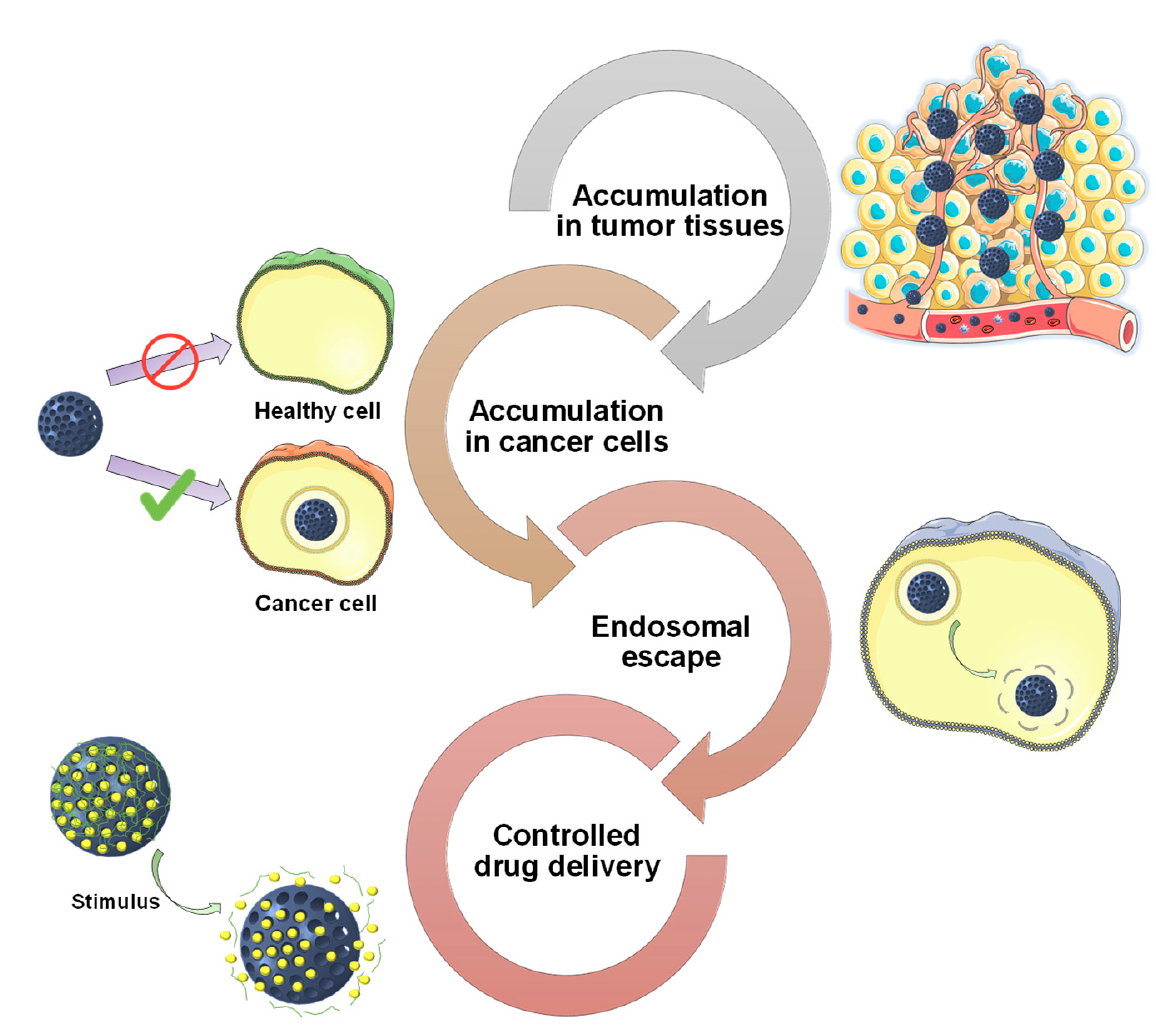Influence of the Surface Functionalization on the Fate and Performance of Mesoporous Silica Nanoparticles

Mesoporous silica nanoparticles have been broadly applied as drug delivery systems owing to their exquisite features, such as excellent textural properties or biocompatibility. However, there are various biological barriers that prevent their proper translation into the clinic, including: (1) lack of selectivity toward tumor tissues, (2) lack of selectivity for tumoral cells and (3) endosomal sequestration of the particles upon internalization. In addition, their open porous structure may lead to premature drug release, consequently affecting healthy tissues and decreasing the efficacy of the treatment.
First, this review will provide a comprehensive and systematic overview of the different approximations that have been implemented into mesoporous silica nanoparticles to overcome each of such biological barriers. Afterward, the potential premature and non-specific drug release from these mesoporous nanocarriers will be addressed by introducing the concept of stimuli-responsive gatekeepers, which endow the particles with on-demand and localized drug delivery. Download the publication here: Influence of the Surface Functionalization on the Fate and Performance of Mesoporous Silica Nanoparticles
Gisbert-Garzarán, M.; Vallet-Regí, M. Influence of the Surface Functionalization on the Fate and Performance of Mesoporous Silica Nanoparticles. Nanomaterials 2020, 10, 916.

